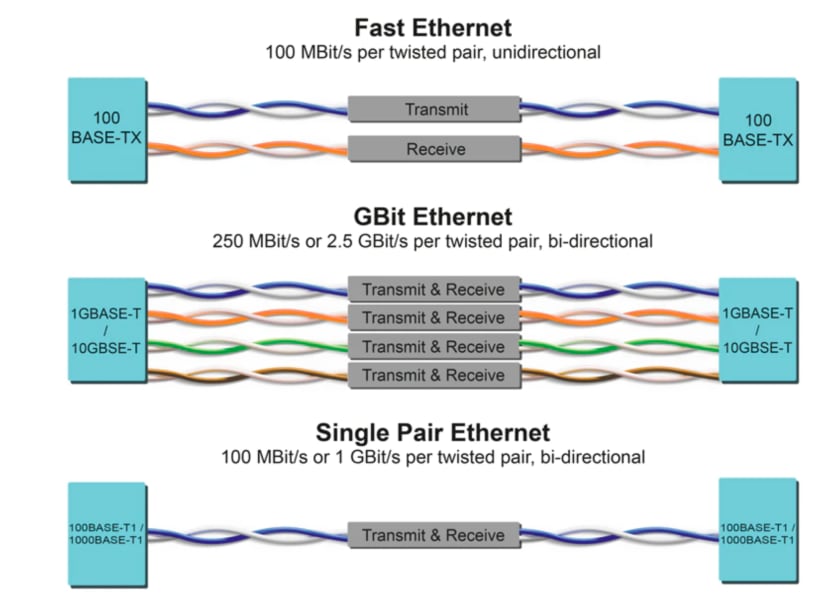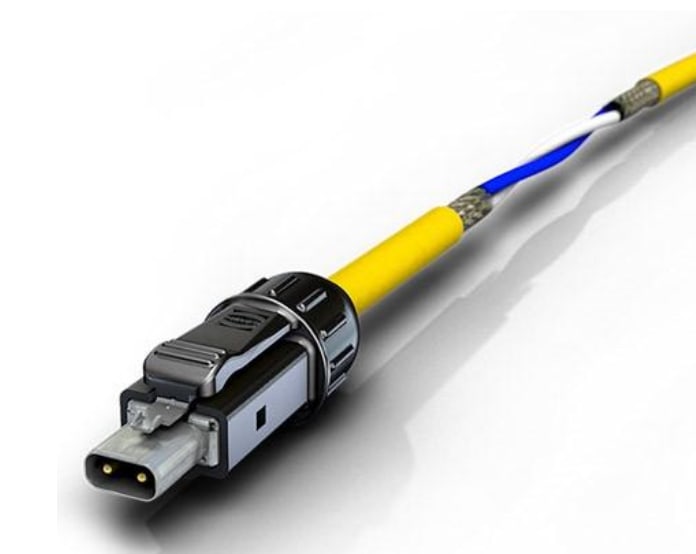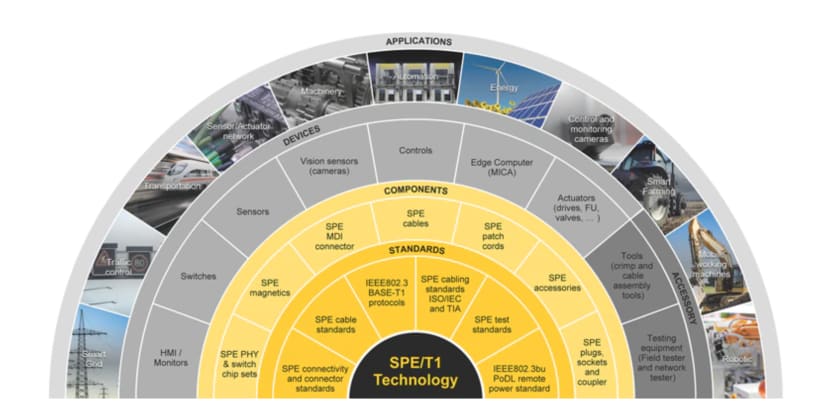An engineer's guide to single-pair Ethernet
Follow articleHow do you feel about this article? Help us to provide better content for you.
Thank you! Your feedback has been received.
There was a problem submitting your feedback, please try again later.
What do you think of this article?
The demands on industrial networking
Provisioning reliable and resilient network connectivity is an essential element to a successful industrial automation deployment. Without it, industrial processes may fail, valuable production assets become damaged, and raw materials wasted. Wireless networks, although competent, don't satisfy all use cases and, within the industrial domain, still require a reliable constant power supply rather than rely on batteries. In the past, the industrial domain has had to deal with proprietary closed network protocols, locking deployment to a single supplier. Reaping the benefits of Industry 4.0 and the Industrial Internet of Things (IIoT) relies on an open protocol approach and interoperability. Ethernet, already the defacto wired network architecture for enterprise IT, is eminently suitable for industrial applications. Ethernet deployment, however, has been slow to catch on due to the physical size constraints and complexities of Cat 6 cabling down to the endpoint device level.
Look inside any factory or production facility today, and you'll probably find it highly automated. The use of industrial robots and collaborative robots, AI-based machine vision systems, and a vast army of endpoint sensors and actuators make up most production processes. The goal is to maximise the overall operational efficiency of the production assets. To achieve this goal, everything is networked together, a task that mixes different data rates, quality of service, and latency requirements.
Until now, the industrial use of Ethernet has, in the main, been limited to high bandwidth network backbones and vision systems. Links to endpoint sensors, actuators, interlock switches, and similar low bandwidth devices rely on intermediate process logic controllers and protocol converters to connect to the Ethernet backbone. However, a recent update to the Ethernet specification paves the way for Ethernet connectivity from the backbone to the endpoints, removing the complexities of dealing with multiple protocols and standards.
Ethernet evolution
Ethernet has come a long way from its origins in the 1970s. Advancements of the 802.3 standards in terms of bandwidth and the physical layer medium continue to this day. Initially, Ethernet used a coaxial cable as the physical medium, but a reinvention of the protocol in the mid-1980s saw the switch from coax to using four pairs of twisted conductors. It was 1987 before the ISO 8877 standard formalised the use of the now-familiar 8-pin RJ45 connector.
Ethernet's convenience and flexibility saw it quickly established as the network method of choice as the personal and enterprise computing markets accelerated. Ethernet saw off many other networking candidates such as Token Ring and Arcnet. As Ethernet adoption rocketed, it wasn't long before it broke out of the traditional computer and server networking markets to find new footholds. The automotive industry is one example. The advent of advanced driver assistance systems (ADAS) introduced the need for high bandwidth and reliable in-vehicle networking for which Ethernet's credentials were impeccable.
Figure 1 – The evolution of Ethernet (source Harting)
Ethernet also found its way into the industrial domain for high bandwidth applications such as industrial robots and vision processing systems. Several recent protocol enhancements are targeted explicitly at industrial applications where real-time operation and determinism are paramount. Time-sensitive networking (TSN) will see Ethernet adoption for industrial applications quickly advance. Industrial Ethernet can carry multiple legacy industrial protocols such as ProfiNet and EtherCat.
Delivering Power over Ethernet (PoE) has spawned adoption in other new markets such as retail, security, and building automation. Ethernet is no longer just for IT but embraces the needs of operational technology (OT).
As the name suggests, single-pair Ethernet (SPE) uses just a single twisted pair of conductors, immediately reducing the cable thickness and the size of the connectors required.
Figure 2 – an example SPE connector (source Harting)
Single-pair Ethernet - the facts
- IEEE 802.3bp - The 1000BASE-T1 Gigabit/s single-pair Ethernet standard - operates at 600 MHz compared to 125 MHz for standard Ethernet.
- PoDL - Power over data line is the SPE equivalent of power over Ethernet - IEEE 802.3cg stipulates multiple voltages and current capabilities with up to 52 watts of power delivered to an endpoint.
- Link distance - 15 metres for unshielded cables, 40 metres shielded.
- 60% lighter cables compared to traditional 4-pair 23 AWG conductors.
- IEC 63171 - The connector standard for SPE breaks from using the RJ45 to include compact industrial connectors such as M8 and M12 that offer IP65/67 ingress protection and robust cable management.
Single-pair Ethernet adoption gathers momentum
Single-pair Ethernet opens up adopting the Ethernet protocol across the manufacturing enterprise, from the data centre to the endpoint. The robust and resilient protocol brings with it years of experience and expertise together with economies of scale. From the deployment perspective, the use of thinner and lighter cables reduces component cost and weight. Also, thinner cables permit a tighter bending radius during installation and a higher cabling density. The use of industry-proven and widely available interconnect methods contributes to lowering costs and speeding deployment time. Another factor that will simplify deployment is the power over data line capability (PoDL). Even the simplest of endpoints require power, and PoDL achieves that together with the data and enough power to operate most intelligent sensor endpoints. For new IIoT network deployments, SPE aids in simplifying the networking infrastructure by removing the need for intermediate process logic controllers and protocol converters.
Figure 3 - Single-pair Ethernet a complete ecosystem of products and applications (source Harting)
SPE also suits deployment within existing industrial networking infrastructure. Support for SPE carrying legacy industrial protocols such as ProfiNet and newer protocols such as IO-Link is already underway with various industry initiatives.
Single-pair Ethernet is on course to become the default network architecture of choice for provisioning resilient, robust and reliable connectivity to the industrial automation endpoint.




